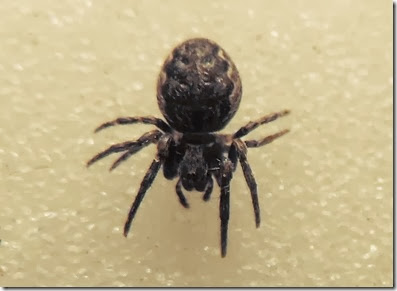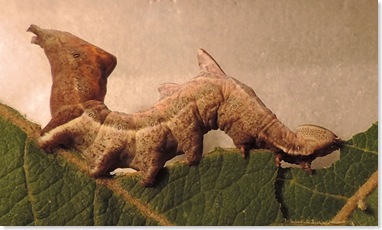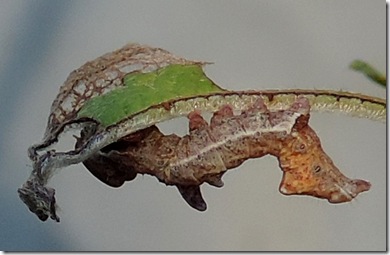In the last few weeks I have found the caterpillars of many different species of moth on the sallow coppice in the window box. The top one in the pictures below is a baby pebble prominent, Notodonta ziczac. Interestingly it seems to have two 'horns' on either side of the head (on the left) which I think are not present in later instars.
The second picture below is of what I think is a caterpillar of one of the thorn moths.
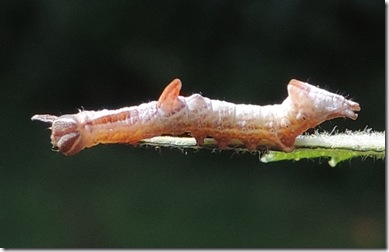
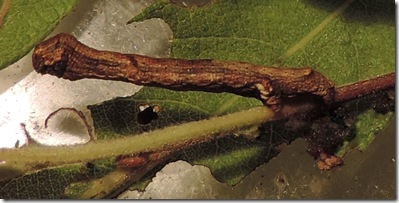
While these caterpillars seem to resemble twigs, they are also very much like bird droppings, especially the pebble prominents which tend to site themselves at the apex of the leaf they are eating. Inevitably this is said be an imitation that makes them difficult to see, But if I can find them easily enough, why does it fool the sharp-eyed birds for whom they are a tasty morsel?
There are also two different green caterpillars on the sallow. I found the top one when it was quite small and it is growing rapidly. The other is, I think, not going to grow to any great size.
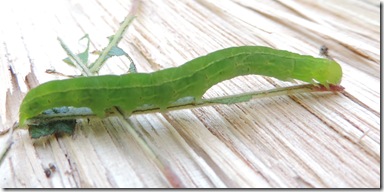
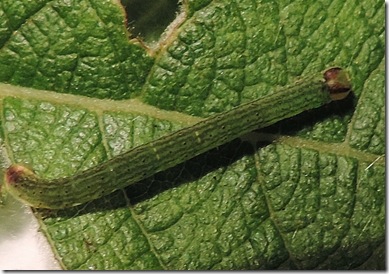
Finally, there is a small caterpillar hiding (not very well) in a kind of silk awning it has sung across one of the larger leaves.
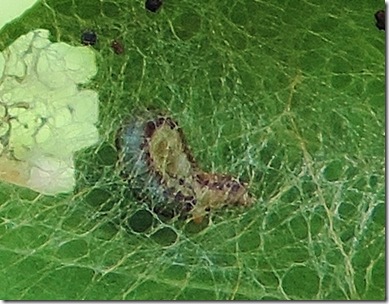
I keep examples of these caterpillars in plastic boxes with supplies of leaves and, usually, they pupate and I have to wait until the moths emerge when they can be photographed and released.
